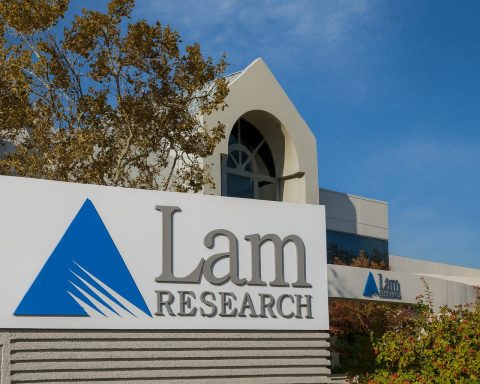- 25th anniversary: Accenture, formerly Andersen Consulting, adopted its new name in 2000. The winning entry “Accenture” – chosen from thousands of submissions – was meant to suggest an “accent on the future” of technology [1]. A global “brandstorming” campaign involved ~65,000 employees voting on 50 finalists [2] [3].
- Explosive growth: In 2001 Accenture had ~65,000 people and $11.4 B revenue; today it has ~779,000 employees and ~$69.7 B revenue [4] [5]. The rebrand and shift from Arthur Andersen helped Accenture avoid the 2001 Enron-era fallout and emerge as a tech-services giant.
- AI-driven overhaul: Under CEO Julie Sweet, Accenture is executing an $865 M, 6-month AI pivot. It cut over 11,000 legacy jobs (citing a “skills mismatch”) while retraining hundreds of thousands of employees in AI and cloud skills [6] [7]. Sweet says staff who cannot be reskilled will “exit on a compressed timeline” and stresses “upskilling is our No. 1 strategy” [8] [9]. At the same time, Accenture continues hiring in growth areas and acquired UK AI consultancy Decho (adding ~40+ Palantir-engineering experts) to bolster its data/AI division [10].
- Latest results: FY2025 (ended Aug 2025) revenue was $69.7B (+7% YoY) with net income ~$7.83B (+6%) [11]. Q4 2025 revenue ($17.6B) narrowly topped forecasts, but guidance was cautious (2–5% growth) as U.S. federal spending cuts and H-1B visa hikes weigh on clients [12] [13].
- Stock performance: ACN trades near $253 (Oct 29, 2025) [14], after a brief rally to ~$251 post-earnings [15]. Shares are down ~30% YTD (versus peers, e.g. IBM +50% YTD [16]) and not far above a 52-week low. Analysts remain mostly bullish: ~70% rate ACN a Buy, with a consensus 12-month target around $318 (~+30% upside) [17] [18]. Economists forecast a short-term rally toward $275 if ACN holds above ~$236 support [19]. The forward P/E (~20x) and ~2.6–2.7% dividend yield make the valuation modest after recent weakness [20] [21].
“Accent on the future”: The 2000 Rebrand Breakthrough
In late 2000 Andersen Consulting, under pressure from a legal split with Arthur Andersen, raced to find a new brand. A worldwide naming contest – dubbed “brandstorming” – called on 65,000 employees to submit and vote on options [22] [23]. Landor Associates and Accenture partners sifted through some 550 candidates (51 legally cleared) and distilled them to 50 finalists [24]. At an October 2000 meeting (partially recorded on video), the name Accenture won by a landslide [25]. It was chosen for its modern, professional ring – a blend of AC (from Andersen Consulting) with a nod toward an “accent on the future” for clients [26]. (As Fortune noted, the new moniker was intentionally futuristic [27].) The rebrand reportedly cost $160–$170 M in marketing [28], but it anchored the firm’s independent identity just in time. In fact, as one retrospective quipped, Accenture’s fresh name proved a “blessing in disguise” after Arthur Andersen’s Enron-related collapse in late 2001.
Over 25 years, Accenture’s new identity has held true. The Economic Times highlights that the name change “became a big success story,” helping grow the company to 779,000 people and ~$69.7 B revenue by 2025 [29]. (Emegypt reports the same – from $11.4 B to $69.7 B revenue, 65,000 to 779,000 staff [30].) As one historian notes, the name underscored innovation: CEO Arthur Andersen at the time even branded it as shorthand for an “accent on the future,” cementing a narrative of forward-looking consulting [31] [32].
Pivoting into AI: Jobs Cut, Skills Overhauled
In recent quarters Accenture has leaned into that innovation theme – especially around generative AI. In its Sept 2025 earnings call, CEO Julie Sweet announced a sweeping workforce overhaul: a six-month, $865 M restructuring to shift talent from legacy projects into AI, cloud and data roles [33]. The most visible step: 11,000+ jobs cut or reassigned globally (headcount from ~791,000 down to 779,000) [34]. As Sweet bluntly told investors, “We are exiting on a compressed timeline… where reskilling… is not a viable path” [35] for skills they don’t need.
However, Accenture couples these cuts with massive upskilling. The firm reports training ~550,000 employees in AI fundamentals and has grown its AI/data workforce to ~77,000 specialists (from ~40,000 two years ago) [36]. Sweet repeatedly calls retraining “our primary strategy” and says upskilling is “No. 1” to manage the change [37] [38]. CFO Angie Park echoes that the restructuring simply fixes a “skills mismatch” – phasing out dated roles and reinvesting savings into high-demand areas [39] [40]. Park notes the severance costs will be offset by productivity gains: “cost savings… will be reinvested in our people and our business” [41]. Indeed, Accenture emphasizes it’s still hiring in growth pockets (AI, cloud, data) and has even made strategic buys – e.g. its Oct. 2025 acquisition of UK-based Decho (adding 40+ Palantir-trained engineers) to expand its gen-AI capabilities [42].
These moves mirror a broader tech trend of “rotation” toward AI. Accenture management argued that AI will expand client demand, not shrink it. In an earnings Q&A Sweet told analysts, “we don’t see AI as deflationary… we see it as expansionary,” freeing clients’ budgets for new projects [43]. In other words, efficiency gains from AI are reinvested into fresh business – helping fuel the 7% growth Accenture delivered last year [44]. CFO Park adds that the cuts are not due to underutilized staff but to evolving skills: the company will “cut old roles and bring in needed new ones” [45]. This disciplined pivot aims to keep Accenture at the forefront of AI-driven consulting, a key part of its “accent on the future” identity.
Strong Earnings but Cautious Outlook
Accenture’s latest quarterly report (Q4 FY2025) beat on top-line but tempered expectations. Revenue of $17.6 B (+7% YoY) slightly topped forecasts [46], aided by robust new bookings ($21.3 B backlog). Full-year revenue reached ~$69.7 B (+7%) [47], and net income hit ~$7.83 B (+6%) [48]. Yet management guided only 2–5% revenue growth for 2026, below the Street’s ~5% consensus [49]. Accenture cited U.S. federal budget cuts and project delays (about 8% of sales) as drag, alongside rising costs from its restructuring [50] [51].
Investors greeted the results with mixed reactions. Shares spiked ~3.6% the day after earnings (Oct 21) to ~$251 [52], reflecting the beat and confidence in the AI play. But the stock remains off its spring highs (~$398) and is trading near its lows of the past year [53] [54]. As of Oct. 29, 2025 ACN is around $253 [55]. Analysts note the stock is near decade-low valuations (forward P/E ~20x, versus ~30x industry), partly due to fiscal caution [56] [57].
Looking ahead, Wall Street consensus remains constructive. About 21 of 30 analysts rate ACN a “Buy” (roughly 70% positive), with a 12-month average target ~$318 [58]. (Major firms: J.P. Morgan ~302, Guggenheim ~305, Morgan Stanley ~$325–340 [59] [60] – although some, like MS, have trimmed targets.) These imply ~20–30% upside. Simply Wall Street’s valuation model even pegs fair value near $274 (only ~8–10% above current) [61]. Dividend investors take note: in Oct. 2025 Accenture raised its quarterly payout to $1.63 (annual $6.52) for a ~2.6% yield [62], and authorized ~$9.3 B for buybacks/dividends this fiscal year, buoying investor confidence.
What the Experts Say & Market Context
Industry analysts highlight that the slowdown is more cyclical than structural. CFRA’s Brooks Idlet, for example, applauds the AI strategy and points out that Accenture “has a strong reskilling operation internally” [63]. He and others argue that solid backlog and revenue base mean the recent pullback may be overdone – the stock now looks cheap if growth rebounds. Zacks and Jefferies note the 32% YTD drop (ACN’s worst in years) with cautious guidance, but still call the valuation attractive given the franchise [64].
Risks remain. Rising U.S. interest rates and geopolitical worries have damped global IT spending (the Indian IT index is down ~20% YTD) [65]. Proposed visa fee hikes and government austerity could slow projects further. Sector peers have mixed fortunes: IBM’s stock has surged ~+50% YTD on its own transformations [66], while Cognizant and TCS report muted growth under similar headwinds. Accenture’s biggest private rival, Deloitte, grew only ~+4.9% in FY2025 [67].
In summary, Accenture is at a turning point: its bold name-change legacy set it on a path of continuous reinvention, and today its strategy is to double down on AI and cloud. CEO Sweet emphasizes that the ongoing tech “megatrend” will ultimately benefit Accenture – “we do not see AI as deflationary; we see it as expansionary” [68]. Markets will be watching whether the AI bet and cost cuts can jump-start Accenture’s mid-single-digit growth and get the stock off its perch. For now, analysts note, patience may be needed as Accenture navigates short-term headwinds [69] – but many remain upbeat about its long-term trajectory.
Sources: Accenture earnings releases and earnings call transcripts [70] [71]; news reports (including Fortune/Economic Times/Ts2.tech) on the 25th anniversary name change [72] [73]; Accenture press releases (e.g. Decho acquisition [74]); Reuters/Financial media coverage of AI projects (e.g. Mondelez’s new AI tool co-developed by Accenture [75]); and stock analysis/forecasts from MarketBeat, Economies.com and Simply Wall Street [76] [77]. All data as of late Oct 2025.
References
1. ts2.tech, 2. emegypt.net, 3. economictimes.indiatimes.com, 4. emegypt.net, 5. economictimes.indiatimes.com, 6. ts2.tech, 7. ts2.tech, 8. ts2.tech, 9. ts2.tech, 10. newsroom.accenture.com, 11. ts2.tech, 12. ts2.tech, 13. ts2.tech, 14. appreciatewealth.com, 15. ts2.tech, 16. ts2.tech, 17. ts2.tech, 18. ts2.tech, 19. www.economies.com, 20. ts2.tech, 21. ts2.tech, 22. emegypt.net, 23. economictimes.indiatimes.com, 24. emegypt.net, 25. emegypt.net, 26. ts2.tech, 27. ts2.tech, 28. ts2.tech, 29. economictimes.indiatimes.com, 30. emegypt.net, 31. ts2.tech, 32. ts2.tech, 33. ts2.tech, 34. ts2.tech, 35. ts2.tech, 36. ts2.tech, 37. ts2.tech, 38. ts2.tech, 39. ts2.tech, 40. ts2.tech, 41. ts2.tech, 42. newsroom.accenture.com, 43. investor.accenture.com, 44. investor.accenture.com, 45. ts2.tech, 46. ts2.tech, 47. ts2.tech, 48. ts2.tech, 49. ts2.tech, 50. ts2.tech, 51. ts2.tech, 52. ts2.tech, 53. ts2.tech, 54. ts2.tech, 55. appreciatewealth.com, 56. ts2.tech, 57. ts2.tech, 58. ts2.tech, 59. ts2.tech, 60. ts2.tech, 61. ts2.tech, 62. ts2.tech, 63. ts2.tech, 64. ts2.tech, 65. ts2.tech, 66. ts2.tech, 67. ts2.tech, 68. investor.accenture.com, 69. ts2.tech, 70. ts2.tech, 71. investor.accenture.com, 72. ts2.tech, 73. economictimes.indiatimes.com, 74. newsroom.accenture.com, 75. www.reuters.com, 76. appreciatewealth.com, 77. www.economies.com







